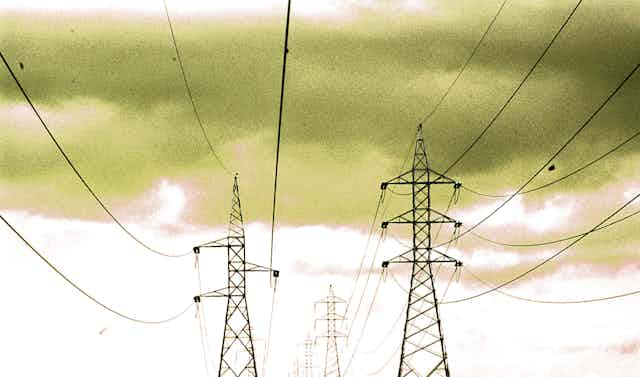Chief Scientist Alan Finkel’s preliminary report on the National Electricity Market (NEM), released on Friday, sets the scene for a comprehensive review of the electricity network.
The report identifies that energy and emissions reduction policy must be brought together. There is no doubt that the electricity sector will be central to any emissions-reduction efforts in Australia.
However, the report also appears to see the rise of renewable energy in the electricity system as a disturbance rather than an opportunity.
The report discusses how the NEM should be reformed in response to a changing mix of generators – coal, gas and renewables. But it does not proactively seek to discuss the role of the NEM in achieving the emissions reductions and renewable energy targets of federal and state governments.
Transition doesn’t have to break the grid
The new National Transmission Network Development Plan 2016 by the Australian Energy Market Operator (AEMO) shows what such a proactive approach might look like. It shows that transmission investment within and across state borders will be crucial for Australia’s energy transformation.
International examples can provide insights into what these strategic investment solutions could be. The Finkel report mentions, for instance, the proactive designation and connection of wind zones in Texas. Other examples are the facilitation of offshore network development in the UK, and the German north-south interconnectors.
A similar mechanism could allow the NEM to access renewable energy resources in new areas, as well as upgrade existing networks to increase renewable uptake. As the AEMO plan shows, these types of measures can “smooth the impact of variable renewable energy” and “improve system resilience”.
Efficiency, reliability and reduced emissions
The Finkel report queries whether the National Electricity Objective (NEO) needs to be amended to achieve the integration of energy and emissions-reduction policy. The current objective is:
…to promote efficient investment in, and efficient operation and use of, electricity services for the long-term interests of consumers of electricity with respect to – price, quality, safety, reliability and security of supply of electricity; and the reliability, safety and security of the national electricity system.
The objective sets the parameters for developing electricity market rules and limits the scope of regulatory decision-making.
It reflects the purpose of the NEM at the time it was introduced. The NEM was initially introduced as a market-based governance framework to achieve the public service of electricity as efficiently and reliably as possible.
The report states that we need to find solutions to address the so-called “energy trilemma”. Energy policy needs to strike a balance between “security, affordability and environmental objectives”.
While the first two of these objectives are covered in the electricity objective, the last – environmental objective - is not. The NEO should reflect these changed consumer expectations.
In the age of climate change, we expect our electricity system to be reliable, affordable and green. A rephrasing of the NEO would allow for more innovative approaches to proactively develop market rules to facilitate renewable energy.
Expanding the objective would also see Australia in good company. Both the UK and German regulatory objectives contain express links to emissions reductions (UK) or environmental compatibility and renewable energy (Germany).
Putting the puzzle pieces together
The report argues for a “whole-of-system approach” to developing the energy system. The report discusses especially to what degree states and other institutions in energy markets need to work together to achieve this.
However, we also need national oversight to develop the grid. More advanced energy transition experiences in Europe show such a refocus of market reform.
Coordinated planning across the NEM will be crucial to achieve this whole-of-system perspective. While the market operator, AEMO, has a limited planning role in the NEM – identifying opportunities for network investment – there is currently no mechanism to encourage planning for the reliability and security of the whole of the NEM. Network businesses invest to ensure the reliability within their networks – contained within state borders.
Germany provides an example of how a whole-of-system approach could be achieved. German law compels the different network businesses to cooperatively develop a national grid development plan based on scenario frameworks and overseen and approved by the Federal Network Agency. Similar cooperative mechanisms could be introduced in the NEM regulatory framework.
What about climate adaptation?
The report mentions two examples of the challenges climate change might pose to the network, the black-out in South Australia and the drought in Tasmania. In both cases, a natural event combined with an interconnector (transmitters between states) fault triggered a challenge to energy security. Not mentioned in the report are the 2009 bushfires in Victoria, when a significant number of devastating fires were caused by failed electrical assets.
All of these kinds of extreme weather events can be linked to climate change. The need to adapt to more frequent and more severe weather events should be an essential part of a review into the security and reliability of the electricity sector.
While this is a preliminary report only, it picks up on many pertinent issues. This short analysis covers only some of the issues raised in the report. The prelimiary report is now open to public submissions. This provides an outstanding opportunity to consider and shape the future of the electricity network.

